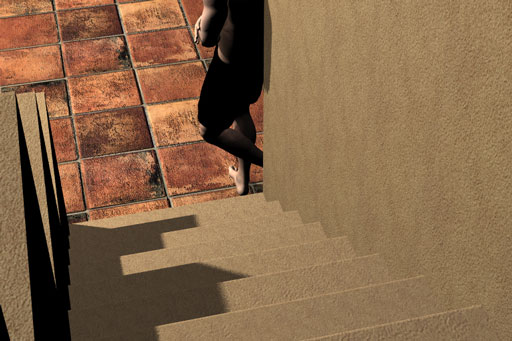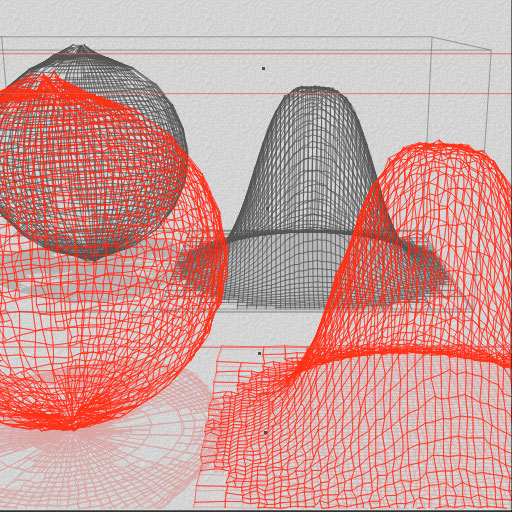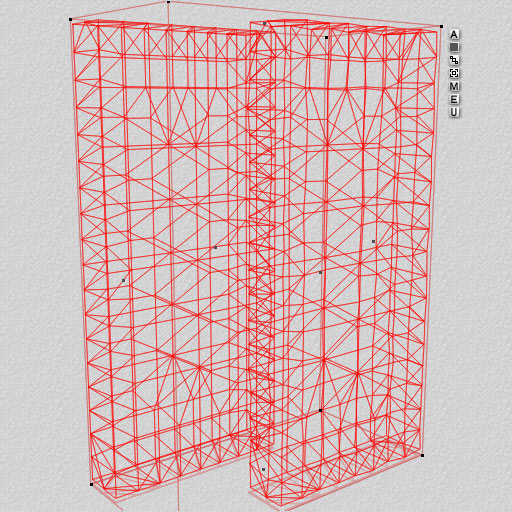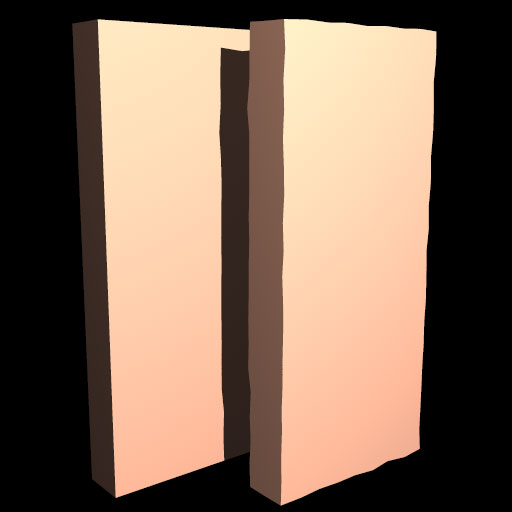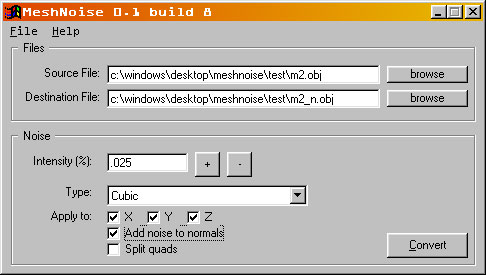 |
|||||||
|
When I first started using Bryce in 1998 one of my first disappointing moments was when I brute force modeled an array of floor tiles and they rendered looking like one solid object. It was a bad idea to model a tile floor like that in the first place but the basic problem was that the CAD software I was using at the time (Corel VisualCAD) dutifully created each tile to many decimal places of perfection. Without random variations, the floor appeared to be solid. A second typical example is a room where the walls, ceiling and floor meet at perfect angles. The Hedge series seemed more stylized because you wouldn't expect to see such perfect lines outdoors. Recently I was working on a texture study and ran into the same problem. I was going to avoid the issue again by doing some post work but decided to experiment with an idea I've had for quite some time.
Sometimes it's also possible to isolate the planar surfaces and replace them with noisy terrains after you've imported the model into Bryce but I had a more general solution in mind. Mesh Noise - AlphaMesh Noise is a freeware helper application that adds random variation to the vertex points of a mesh object. Random variation adds interest and realism to an otherwise sterile mesh.
FeaturesThe problem seems to be that you get the best results when there are many vertex points on the edges of an object and fewer on the smooth areas. Unfortunately, generating a very high density mesh also produces a very large file. Currently the application uses almost no system resources because it processes the mesh on-the-fly. An option to subdivide the mesh or convert a grid mesh to an adaptive mesh will almost certainly place a heavy load on the processor and memory. These examples use white noise but it already has options for squared and cubic noise. Maybe other noise distributions later.
Ok, I'm GameEver wonder what an alpha version looks like? Here's your chance. Tell me if this is worth finishing or if I should just trash it. I'm almost of the opinion that it really needs a subdivision algorithm to increase the number of vertex points at the edges before it becomes useful and generally worthy of widespread release. Standard disclaimer applies ... if it does something bad, it's your problem not mine. That said I'll tell you that it was developed on the same box as my personal financial software. Questions and CommentsSend your questions and comments about Mesh Noise to toad@castironflamingo.com. Copyright © 2002 - CJC, all rights reserved |


